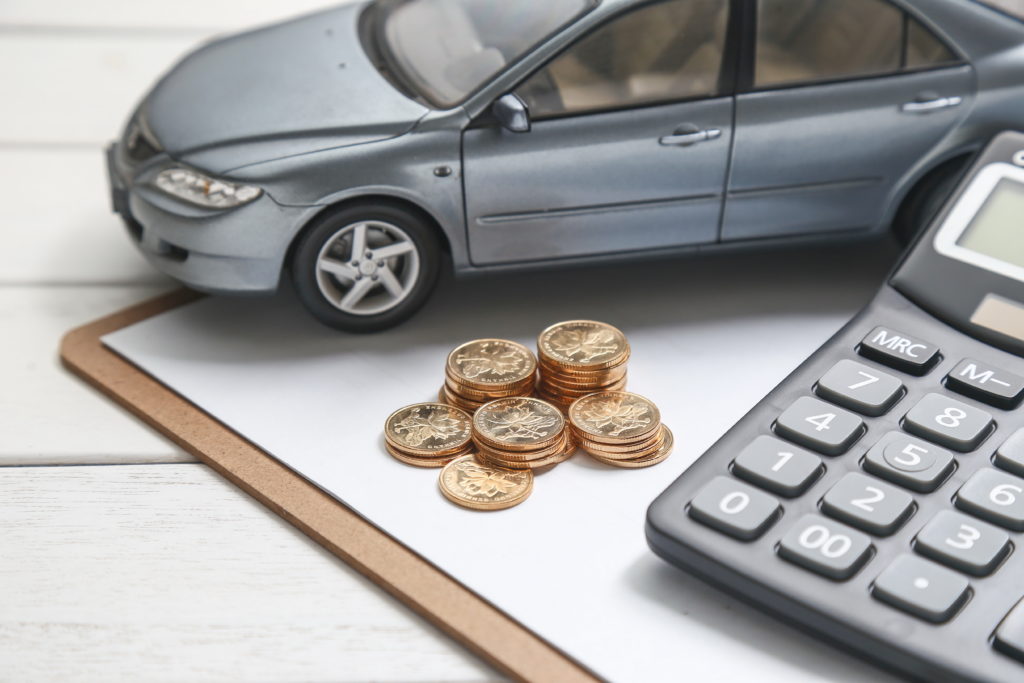What you need to know before taking out an automobile loan
Very few people can afford to pay the full amount for a car, so the usual choice is to get an automobile, or auto, loan.

It’s not very easy to get approval for these loans though, and more often than not, applicants get rejected. This article is going to teach you what you need to know and do in order to get approved for an auto loan.
Where to get auto loans
People searching for auto loans generally have to choose one of these three providers: banks, dealerships, and online service providers.
1. Banks: A bank is not the easiest place to get an auto loan. When a bank loan is approve, the cost of the car is deposited as a lump sum in the borrower’s account. The borrower then uses the money to pay for the car, and pays back the bank in installments.
However, there is a lot of paperwork and in-person appointments involved, and it can be tiring. Banks also typically only approve loans for people with high credit scores.
2. Dealerships: The biggest advantage of getting a loan from a dealership is convenience. Dealerships often offer financing options at the point of sale; meaning that you can finance and purchase a car at the same time. Getting your loan from a dealership usually means that you can pay a percentage of the cost of the car (or even none of it) down, and then make periodic payments for the rest.
You should remember, however, that dealerships usually save the best deals for customers with high credit scores.
3. Online Service Providers: Online lenders are the newest type of lenders, and also the most flexible. Applying for loans is more convenient than with the other two options; all forms are complete online. It’s also the most accessible, as it caters to individuals with all types of credit situations.
Whichever option you choose, you should remember to make sure you look for the best deal you can find. This can be stressful in the short term, but it will save you at least some money on the long run.

Browsing and comparing deals is easier when you use online service providers, as they have all their details online. It also saves you transportation costs.
Difference between leasing and financing
Leasing and financing are common terms used by people looking to get a car, but how do the two differ?
The main differences between leasing and financing involve what exactly you pay for, and what responsibilities you have. A few of them are highlighted below.
1. Ownership: A lease is like a rental—you pay to use the car for a predetermined period of time, after which you can choose to either buy or return it. You don’t own the car, so you aren’t allowed to customize or modify it in any way.
When you finance a car, however, you own it. You can use and customize it however you want, for however long you want.
2. Payments: Monthly payments on a lease are usually lower than what you would pay if you financed your car. This is because with a lease, you only pay for the depreciation of the car during the term of the lease; unlike financing, where you pay the full value of the car.
When you get approved for a loan, you’d usually make a down payment, along with taxes and registration fees. With a lease, however, you’d be required to make a security deposit and the first month’s payment in addition to what you’d pay with a loan.
3. Distance: Typically, you’ll have to negotiate a distance you can travel each year when you lease a car. This can be a problem if you travel long distances, as going over your yearly limit will incur extra charges.
When you finance a car, you can take it as far as you want without any charges.
It’s important to remember, however, that the resale value of your car will go down with distance traveled.
4. Returning the car: After the lease term of a car is over, you’re required to either return it, or buyout the lease. Buying out a lease is based on the residual value (the car’s projected end-of -lease price, predicted at the start of the lease).
You can either pay it with cash or with a loan. When you finish making payments on a financed car, however, the car is yours to do whatever you want with.
If a car undergoes a lot of wear and tear during a lease term, or you choose to end your lease early, you’ll have to make additional payments; but with a financed car, you can sell or trade in your car at any time and in any condition.
In the end, choosing between leasing and financing boils down to your long-term intentions. If you like to change your car often or drive really nice cars, then leasing is the choice for you.
However, if you’d rather get a used car, drive long distances, or like to customize your car, then the better option is financing.
A loan is also good for your credit score—the regular repayments help build your credit over time.
Why shouldn’t you just buy?
If you can afford it, buying a car outright can be liberating. You don’t have to worry about monthly payments, interest, or other added fees. In the long-term, buying a car has the benefit of being the cheapest option.
However, not a lot of people can afford to pay the full price of a car all at once; and even those who can might benefit from taking out a loan to finance it.
Taking and repaying loans has a better effect on your credit than making purchases with cash. For example, if you plan on buying a home, you will qualify for a higher mortgage if you finance your car than if you buy it, because the repayments on your car loan will boost your credit score.
In the end, the choice of whether or not to buy your car is yours.
Consider your finances, credit, and the degree of ownership you want before you make your decision.
Interest rates and other things to note
There are some key factors you need to take note of in order to get the best loan you can:
1.Interest rate: The higher the interest rate on the car, the more you’ll pay for it in the long term. You should try to get it as low as possible.
You should also note whether your interest is at a fixed or a variable rate. Fixed loan rates stay the same throughout the loan term, while variable loan rates are subject to change based on the lender’s prime rate.
While variable rates are usually lower, they are more volatile, and come with considerable risk.
2. Simple vs Compound interest: Simple interest is—well—simple. It’s interest based on the the principal amount, the loan you took out.
Compound interest, however, is based on the principal amount and the accumulated interest. Compound interest will grow faster and be higher than simple interest. It is important to note this difference when taking a loan, and to prepare accordingly. Most car loans are simple interest loans.
3. Loan term: A longer term will reduce monthly payments, reducing short-term costs. However, a shorter-term loan is preferable if you can afford it, as it reduces the total amount of money and time you spend paying off the loan.
4. Payment frequency: You can often choose the time frame for your payments—they can be weekly, bi-weekly, or monthly. It’s best to make payments line up with your work pay schedule. You should note that weekly and bi-weekly payments will reduce the total amount of interest you pay, and possibly shorten the length of time you take to pay off the loan.
Do you qualify for an auto loan?
There are a number of factors that determine whether or not you’re eligible for a car loan. Things like your income, credit score, and job stability are usually checked before you’re approved for a loan.

- Job stability: Having and keeping a job is important, because it means you have a steady source of income and can therefore afford to make the payments on your loan. If your income is unreliable, lenders will be reluctant to approve you.
- Income: Higher income increases your chances of approval. If you have a steady, high income, lenders will be encouraged to release a loan to you, as they will feel confident in your ability to pay it back.
- Debt-to-income ratio: This shows the amount of debt you owe, relative to your income. If this ratio is high, lenders will be less likely to approve you, as they will not feel confident that you can pay your car loan back with the amount of debt you already have.
- Loan amount: You should apply for a loan that is proportional to your financial health. Lenders will be inclined to approve your loan if you ask for an amount that your current income can cover.
- Credit score: There is no set minimum credit requirement for getting an auto loan, but a credit score of about 650 is a general benchmark. Some institutions such as banks will only approve individuals with exceptionally good credit, and dealerships will usually give the best deals to people with relatively high credit scores.
Online lenders are the best option for people with bad credit; they have plans for people with all types of credit and income, and usually have lower interest rates and loan requirements.
Requirements to apply for an auto loan
While requirements vary from lender to lender, a general list of required documents for auto financing are:
- A valid government-issued form of identification, such as a driver’s license
- Proof of car insurance
- Banking details and/or recent bank statements
- Proof of address
- Credit report
You may also be asked to provide the following information:
- Your employment history in the last three years
- Any outstanding debts you have
- Consent to a credit rating check
You also need to be at least the age of majority in your province or territory before you can apply for an automobile loan. Once this is all in order, you’re ready to start your loan application. You should remember to double check your application forms, as any inaccuracies will lead to your application being rejected.
How to get out of an auto loan
You will likely want to get out of an auto loan for one of two reasons; it has become an upside-down car loan, or you can no longer afford to make the payments.
1. Upside-down car loan: Having an upside-down car loan basically means that you owe more on the car than the car is currently worth, putting you in negative equity.
This is more common with new and luxury cars, which drop in value rather quickly after they’re bought.
There are a number of websites where you can check whether you have an upside-down loan before making the choice to try and get out of it.
2. Inability to make payments: Loss of employment, medical, or a range of other emergencies, or any number of other factors can affect your financial situation and make you unable to make your car payments as scheduled.

This can lead to late fees and other penalties that make it illogical to keep the loan.
Here are a few ways to get out of an auto loan:
1. Selling the car or transferring the loan: If you can no longer afford the loan, you can try to sell the car or transfer the loan to someone else. If you can find a family member friend, or anyone else willing to take it off your hands, you can get a new contract and hand it over to them.
It’s important to make sure that the new owner signs all the required documents, so full liability of the loan falls to them.
However, not all lenders permit this. Banks and financial institutions have strict protocols for borrowers, and prohibit this.
2. Voluntary repossession: This should only be used as a last resort, when you can neither make the payments nor transfer the loan. You simply call your lender and inform them that you’re choosing voluntary repossession.
It is not without consequences; repossession of your property will significantly drop your credit score, and potentially prevent you from getting loans in future.
Lenders will typically put the car up for auction, if they can’t get the full balance of your loan, you’ll still be require to pay the rest.
3. Refinancing: This is both the most reasonable, and the most convenient route to take if your auto loan is costing too much. You’re not exactly getting out of your loan, but you are renegotiating the terms of your repayment. It’s the most favorable method for both you and your lender. As you can choose a payment plan that works for you, and your lender can get their money back without all the stress that comes with the other methods.
You can choose to make smaller monthly payments, pay a few lump sums, pay off all your debt at once, or any other payment plans you and your lender can agree on.
4. Discuss before deciding: This is a preventative method. If you aren’t sure you’ll be able to make payments, you can discuss the terms with your lender before taking the loan and get ahead of the situation.
You’ll likely be able to come to an agreement that works for both of you. Avoid any of the other, more troublesome methods.
Final thoughts
An auto loan is your best option if you want to own a car, but don’t have the money to pay for it right away.
You should consider your income, credit, outstanding debt, and the model of car you want before deciding where to get your auto loan from, and you should plan what you’ll do afterwards before you go through with getting the loan.
Remember that getting a car is not an investment per se, but it does save you transportation costs and physical stress in the long term.
With all this in mind, do you think you’re ready to take out an auto loan?

